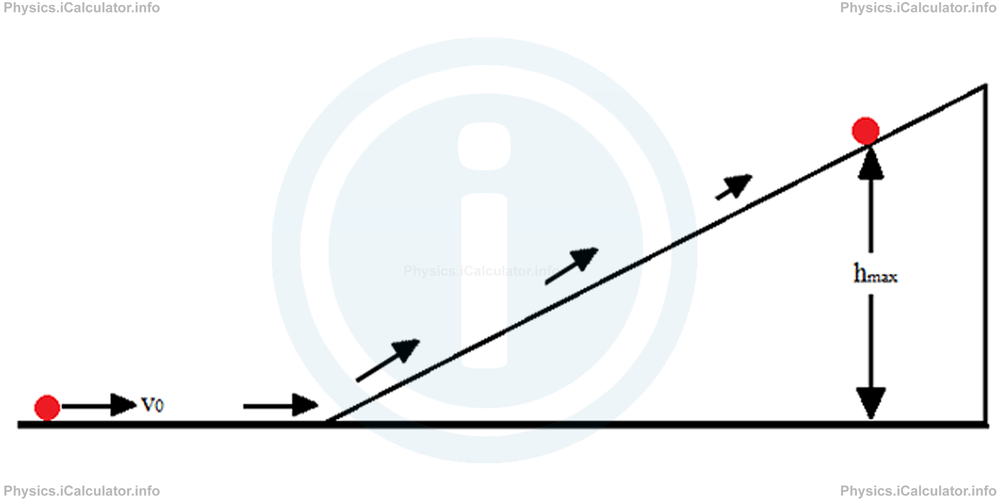Menu
Physics Lesson 5.3.3 - The Law of Mechanical Energy Conservation
Please provide a rating, it takes seconds and helps us to keep this resource free for all to use
Welcome to our Physics lesson on The Law of Mechanical Energy Conservation, this is the third lesson of our suite of physics lessons covering the topic of Gravitational Potential Energy, you can find links to the other lessons within this tutorial and access additional physics learning resources below this lesson.
The Law of Mechanical Energy Conservation
In the Physics tutorial "Work. Energy. Types of Energy", it was stated that mechanical Energy (ME) represents the sum of Kinetic and Potential Energy of a system. In the specific case, when this potential energy is produced by the gravitational field of the Earth, we write:
If no external factors such as friction with the ground, air drag etc., are relevant, we obtain the Law of Mechanical Energy Conservation, which says:
"In absence of external factors, the mechanical energy of a system is conserved."
This means that
Equation 6
KE + GPE = constantFor two situations (1) and (2) [or initial and final], we can write mathematically the above law as:
Equation 7
KE1 + GPE1 = KE2 + GPE2Example 2
A 400 g ball rolls down a smooth horizontal surface before starting to raise up along an inclined plane (it is smooth as well) as shown in the figure.

What is the maximum height the ball can reach if initially it is moving at 6 m/s?
Solution 2
The object possesses only kinetic energy. Its value is
= 0.4 kg × (6 m/s)2/2
=7.2 J
Since the horizontal and the inclined plane are both smooth, no friction exists. Therefore, we can apply the law of mechanical energy conservation, which says that the mechanical energy is conserved when no friction exists. Initially the ball was rolling on the ground, so its GPE was zero. When the ball reaches its maximum height, it has no velocity (KE = 0) because all the initial kinetic energy turns into gravitational potential energy. From here, we can determine the maximum height hmax the object reaches during its motion.
We have
KEinitial + GPEinitial = KEfinal + GPEfinal
KEinitial + 0 = 0 + GPEfinal
KEinitial = GPEfinal
GPEfinal = 7.2 J
GPEfinal = m × g × hmax
hmax = GPEfinal/m × g
= 7.2 J/0.4 kg × 9.81 N/kg
≈1.83 m
Hence, the object goes up to 1.83 m above the ground when rolling up the slope.
Remark! In this exercise, quantities such as the displacement in the horizontal plane and the angle of the inclined plane to the horizontal direction are not relevant because both planes are considered as smooth. In case when friction is considered, the above quantities affect the result, so they must be considered as well. We will discuss such situations in the next Physics tutorial "Elastic Potential Energy."
You have reached the end of Physics lesson 5.3.3 The Law of Mechanical Energy Conservation. There are 3 lessons in this physics tutorial covering Gravitational Potential Energy, you can access all the lessons from this tutorial below.
More Gravitational Potential Energy Lessons and Learning Resources
Whats next?
Enjoy the "The Law of Mechanical Energy Conservation" physics lesson? People who liked the "Gravitational Potential Energy lesson found the following resources useful:
- Law Feedback. Helps other - Leave a rating for this law (see below)
- Work, Energy and Power Physics tutorial: Gravitational Potential Energy. Read the Gravitational Potential Energy physics tutorial and build your physics knowledge of Work, Energy and Power
- Work, Energy and Power Revision Notes: Gravitational Potential Energy. Print the notes so you can revise the key points covered in the physics tutorial for Gravitational Potential Energy
- Work, Energy and Power Practice Questions: Gravitational Potential Energy. Test and improve your knowledge of Gravitational Potential Energy with example questins and answers
- Check your calculations for Work, Energy and Power questions with our excellent Work, Energy and Power calculators which contain full equations and calculations clearly displayed line by line. See the Work, Energy and Power Calculators by iCalculator™ below.
- Continuing learning work, energy and power - read our next physics tutorial: Elastic Potential Energy and Combination of Springs
Help others Learning Physics just like you
Please provide a rating, it takes seconds and helps us to keep this resource free for all to use
We hope you found this Physics lesson "Gravitational Potential Energy" useful. If you did it would be great if you could spare the time to rate this physics lesson (simply click on the number of stars that match your assessment of this physics learning aide) and/or share on social media, this helps us identify popular tutorials and calculators and expand our free learning resources to support our users around the world have free access to expand their knowledge of physics and other disciplines.